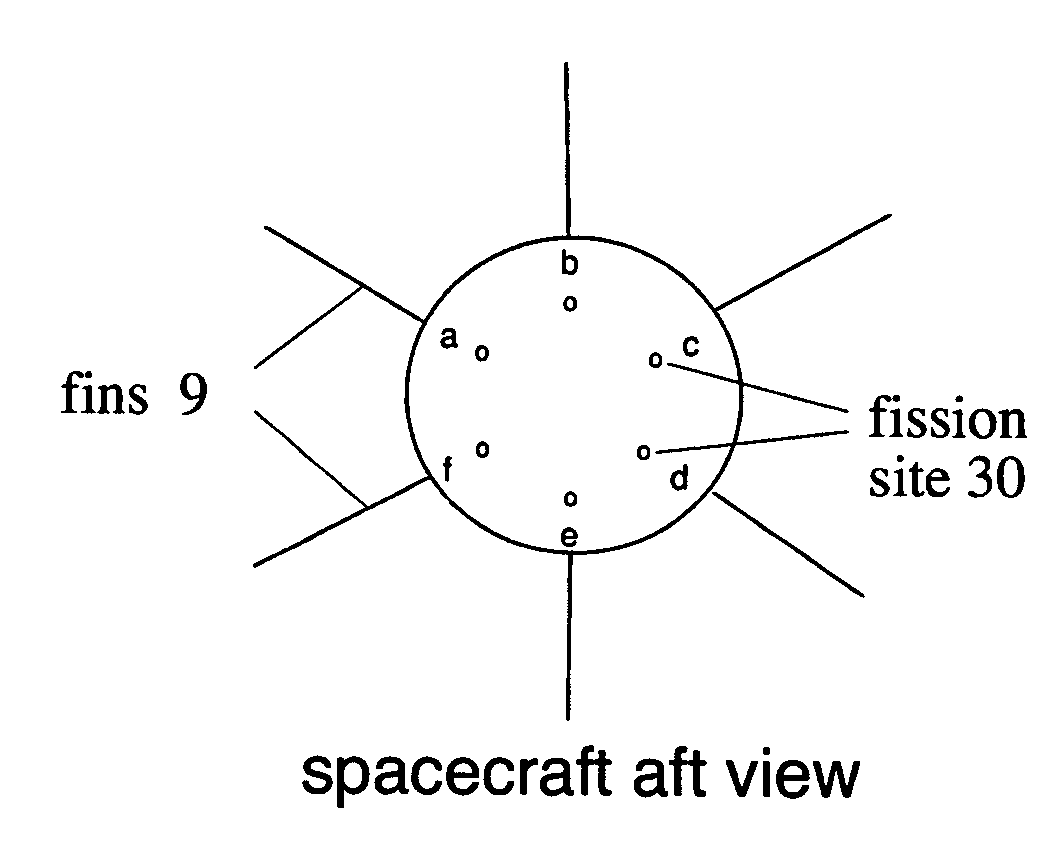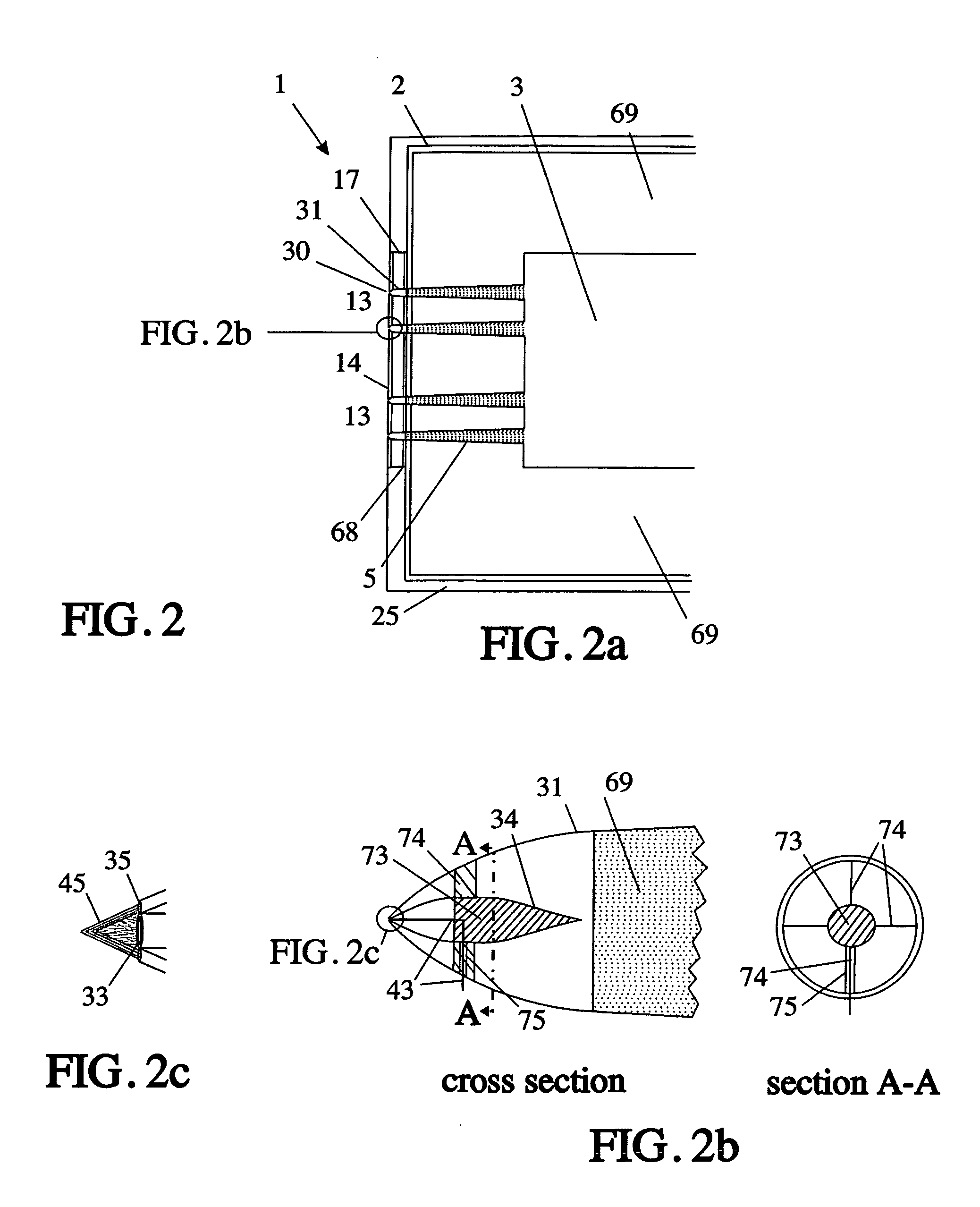Nuclear fission fragment kinetic energy rocket engine
a kinetic energy and rocket engine technology, applied in nuclear engineering, nuclear elements, greenhouse gas reduction, etc., can solve the problems of low thrust-to-weight value, solar photon concept, weakening of our sun's energy rays (lower thrust), etc., and achieve high specific impulse
- Summary
- Abstract
- Description
- Claims
- Application Information
AI Technical Summary
Benefits of technology
Problems solved by technology
Method used
Image
Examples
Embodiment Construction
[0024] Referring now to the drawings, wherein like reference numerals designate like or corresponding parts throughout the views, there is shown in FIG. 1, FIG. 2, FIG. 3 and FIG. 4 a nuclear fission fragment kinetic energy rocket engine. Said engine structure comprises an HSHE 17 and a fission zone 13 containing a shield wall 14 and multiple fission sites 30. Said HSHE comprises a heat sink 16, fissionable fuel tubing 43, neutron injectors 3, and a molten metal coolant zone 50 with inlet piping 52 and outlet piping 54.
[0025] The direct usage of fission fragment kinetic energy to produce spacecraft thrust, the foundation of this invention, allows major structural simplifications from those common to nuclear rocket prior art. The FKR engine has no outer shell or convergent-divergent nozzle, therefore its structure is not required to withstand high operating pressures. By freeing the propulsion fission zone 13 from any form of restricting outer structure aft of its shield wall, a por...
PUM
 Login to View More
Login to View More Abstract
Description
Claims
Application Information
 Login to View More
Login to View More - R&D
- Intellectual Property
- Life Sciences
- Materials
- Tech Scout
- Unparalleled Data Quality
- Higher Quality Content
- 60% Fewer Hallucinations
Browse by: Latest US Patents, China's latest patents, Technical Efficacy Thesaurus, Application Domain, Technology Topic, Popular Technical Reports.
© 2025 PatSnap. All rights reserved.Legal|Privacy policy|Modern Slavery Act Transparency Statement|Sitemap|About US| Contact US: help@patsnap.com



